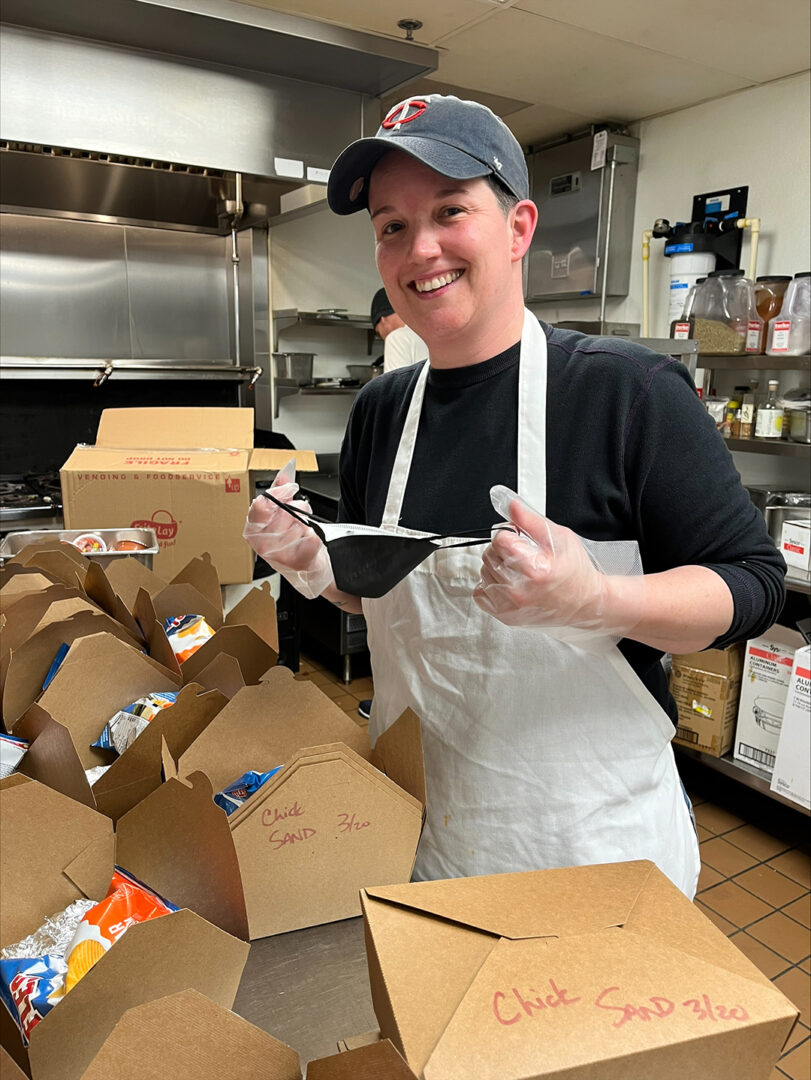Dining Out For Life: The Best Reason to Eat Out This Spring!

Spring is here, and the Twin Cities are about to be bustling with new activities and life!
Mark your calendars for April 27th, which will be the perfect day to treat yourself to dinner out on the town! Not only will you be enjoying a delicious meal, but you’ll be also helping to put an end to HIV.
“How??” you might be wondering. Dining Out For Life, a yearly event hosted by the Aliveness Project, provides HIV prevention and care services to thousands of HIV-positive Minnesotans, and creates a strong community committed to ending the stigma surrounding HIV. And the best part? Supporting this amazing cause is as easy as it gets. All you have to do to donate is eat out at your favorite participating restaurant, and a percentage of the bill goes straight to the Aliveness Project. It really is that simple!
Dylan Boyer, Director of Development at the Aliveness Project, is on his fifth year of producing Dining Out For Life, a project that has helped people living with HIV in Minnesota since 1994. This annual event has made a world of a difference in the fight to support people living with HIV, and it continues to make strides towards ultimately putting an end to HIV altogether. Boyer says, “Dining Out For Life is an International event and more than 50 local HIV service organizations partner with 2,400+ participating restaurants, 4,100+ volunteers, and 300,000+ diners to raise over $4.5 million for people living with HIV/AIDS in the United States and Canada.”

Boyer also adds an important detail for those concerned with contributing to their own communities specifically. “All funds raised through a city’s Dining Out For Life event stay in that city to provide help and hope to people living with or impacted by HIV/AIDS,” explained Boyer. This means that your money stays where you live, and helps invest in the lives and futures of your very own neighbors and friends.
The Aliveness Project was founded in 1985, during a time when standing with those diagnosed with HIV was virtually unheard of. Since then, it has only grown and gained community, proving over and over its importance in the lives of so many. In Boyer’s own words, “The Aliveness Project is a community and wellness center for people who live with HIV. We provide an array of community-centric services including a meal program, food shelf, housing, mental health, harm reduction services, case management, and social activities. [The Aliveness Project] has recently opened Minnesota’s first free PrEP clinic, THRIVE. We serve Minnesota’s most vulnerable folks as risk for HIV. From lab visits to prescription costs our clinical services are 100% free.”
Having a community like this creates an environment where people living with HIV can not only survive, but flourish and have hope for a better future. The staff at The Aliveness Project are also able to create an atmosphere of comfort and care because, as Boyer says, “Most of our staff share a variety of lived experiences with the community we support. We’re on PrEP, living with HIV, recovering from addiction, living with mental health struggles, and have couch surfed or wondered where our next meal might come from.” A stigma-free community is crucial to the lives of all people, especially those living with HIV, because of the profoundly stigmatized and politicized history of HIV/AIDS in the United States. It is incredibly important for HIV positive individuals to know that they are not alone, and there is nothing wrong with them, and The Aliveness Project supplies just that.

This year, The Aliveness Project has a whopping eighty-three restaurants and diners participating in Dining Out For Life, including several LGBTQ-owned spots: Roxy’s, LUSH, Wise Acre, Nico’s Taco, and At Sarah’s Table in Duluth. Also on the list is Brookside Bar and Grill, which is LGBTQ and BIPOC owned. Twenty-one of these restaurants are brand new participants this year, showing that the list of supporters keeps growing and growing. The list of restaurants includes places that serve breakfast, lunch, and dinner, and also coffee shops, bars, and breweries, so there’s a good fit for everyone! The possibilities are truly endless, and according to Boyer, “all our restaurants are allies in [the queer] community.”
Enjoy a lovely meal out at one of your favorite restaurants, and feel good about doing it by knowing that a generous portion of your bill—in some cases 100%—is going towards caring for people living with HIV in our very own community. Participate in this year’s Dining Out For Life, and know that you are doing good for the community, and you are doing good for the world. And remember, just like Boyer says, “Shame and stigma are not welcome at the Aliveness Project—but everyone else is.” Consider participating in this incredibly worthy cause on April 27th!
To find a participating restaurant, log on to: www.diningoutforlifemn.org
5100 Eden Ave, Suite 107 • Edina, MN 55436
©2024 Lavender Media, Inc.
